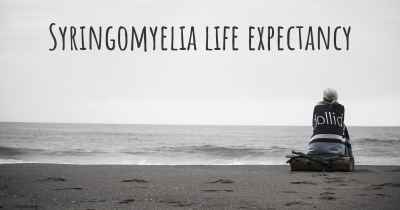Does Syringomyelia have a cure?
Here you can see if Syringomyelia has a cure or not yet. If there is no cure yet, is Syringomyelia chronic? Will a cure soon be discovered?

Syringomyelia is a chronic condition characterized by the formation of fluid-filled cavities in the spinal cord. Unfortunately, there is currently no known cure for this condition. Treatment options focus on managing symptoms and preventing further progression. These may include medications, physical therapy, and in some cases, surgery. It is important for individuals with syringomyelia to work closely with their healthcare team to develop a personalized treatment plan.
Syringomyelia is a chronic neurological disorder characterized by the formation of a fluid-filled cavity or syrinx within the spinal cord. This condition can lead to a variety of symptoms, including pain, weakness, sensory loss, and problems with bladder and bowel control. Syringomyelia is often associated with a condition called Chiari malformation, where the lower part of the brain, known as the cerebellum, extends into the spinal canal.
While there is currently no known cure for syringomyelia, treatment options are available to manage the symptoms and improve the quality of life for affected individuals. The choice of treatment depends on the severity of the condition and the specific symptoms experienced by the patient.
Conservative management: In cases where the syrinx is small and not causing significant symptoms, conservative management may be recommended. This approach involves regular monitoring of the condition through imaging tests and symptom assessment. Pain medications, physical therapy, and lifestyle modifications can also be employed to alleviate symptoms and improve functionality.
Surgical intervention: Surgery is often considered when syringomyelia causes progressive neurological deficits or severe symptoms. The primary goal of surgery is to address the underlying cause, such as Chiari malformation, and to drain the syrinx to relieve pressure on the spinal cord. The specific surgical procedure depends on the individual case and may involve decompression of the cerebellum, removal of obstructions, or placement of shunts to divert the fluid.
Post-surgical care: Following surgery, close monitoring and rehabilitation are crucial. Regular follow-up visits with healthcare professionals are necessary to assess the effectiveness of the surgery, monitor for any complications, and adjust the treatment plan as needed. Physical therapy and occupational therapy may be recommended to aid in recovery and improve functional abilities.
Research and advancements: While a cure for syringomyelia is not currently available, ongoing research and advancements in medical science offer hope for future treatments. Scientists and medical professionals are continuously studying the underlying mechanisms of the condition and exploring innovative approaches to manage and potentially reverse the progression of syringomyelia.
In conclusion, syringomyelia does not have a cure at present, but there are treatment options available to manage the symptoms and improve the quality of life for individuals affected by this condition. Conservative management and surgical interventions, along with post-surgical care and rehabilitation, play crucial roles in addressing syringomyelia. Ongoing research provides hope for future advancements in the field, which may lead to more effective treatments and potentially a cure.
Posted May 22, 2017 by Christina Douthit 1001
Posted Mar 22, 2018 by Tammie 4000
Posted May 21, 2018 by Sue 1400
Posted Jun 19, 2018 by Austyn 3500
Posted May 16, 2017 by María Angélica González gallon 1800








